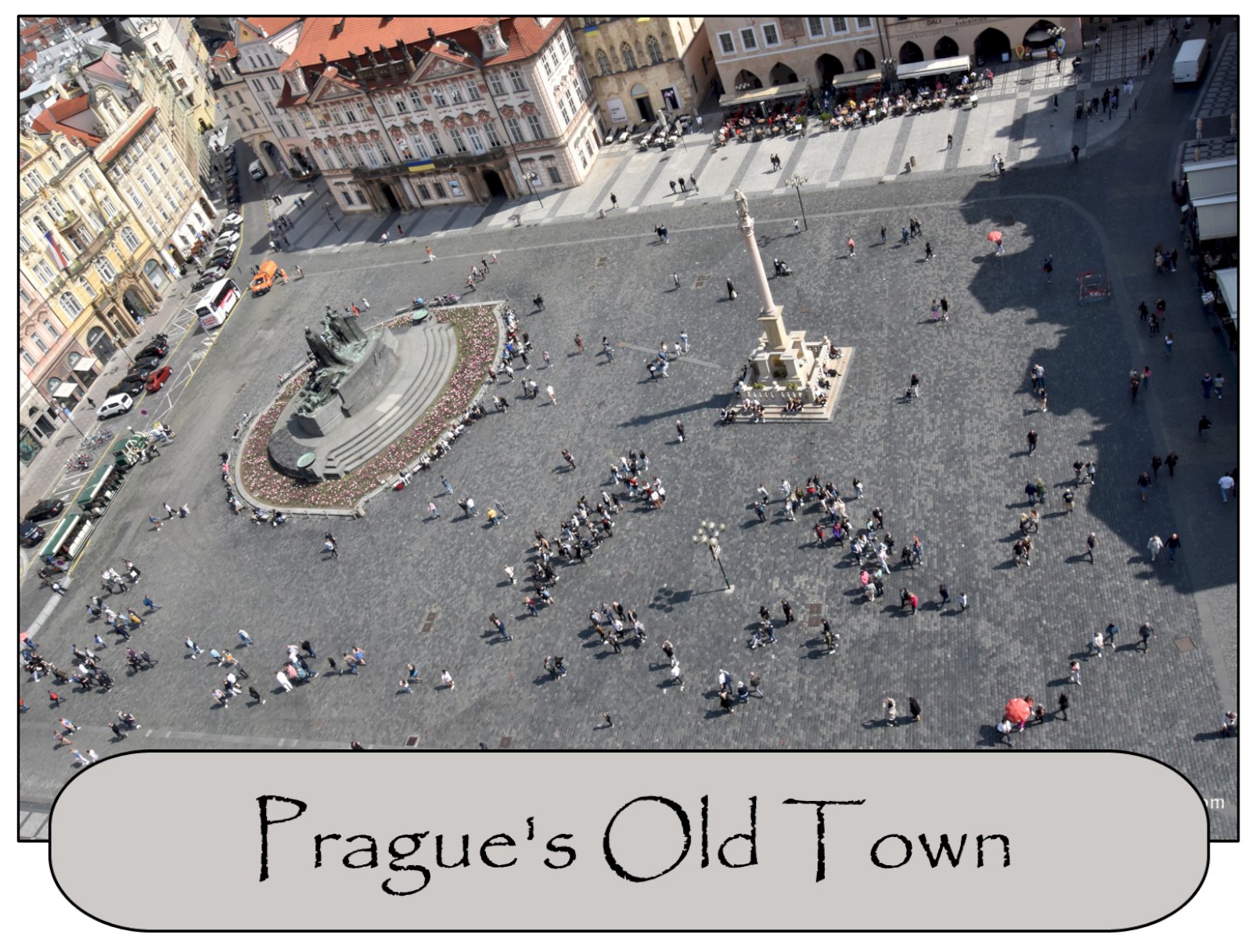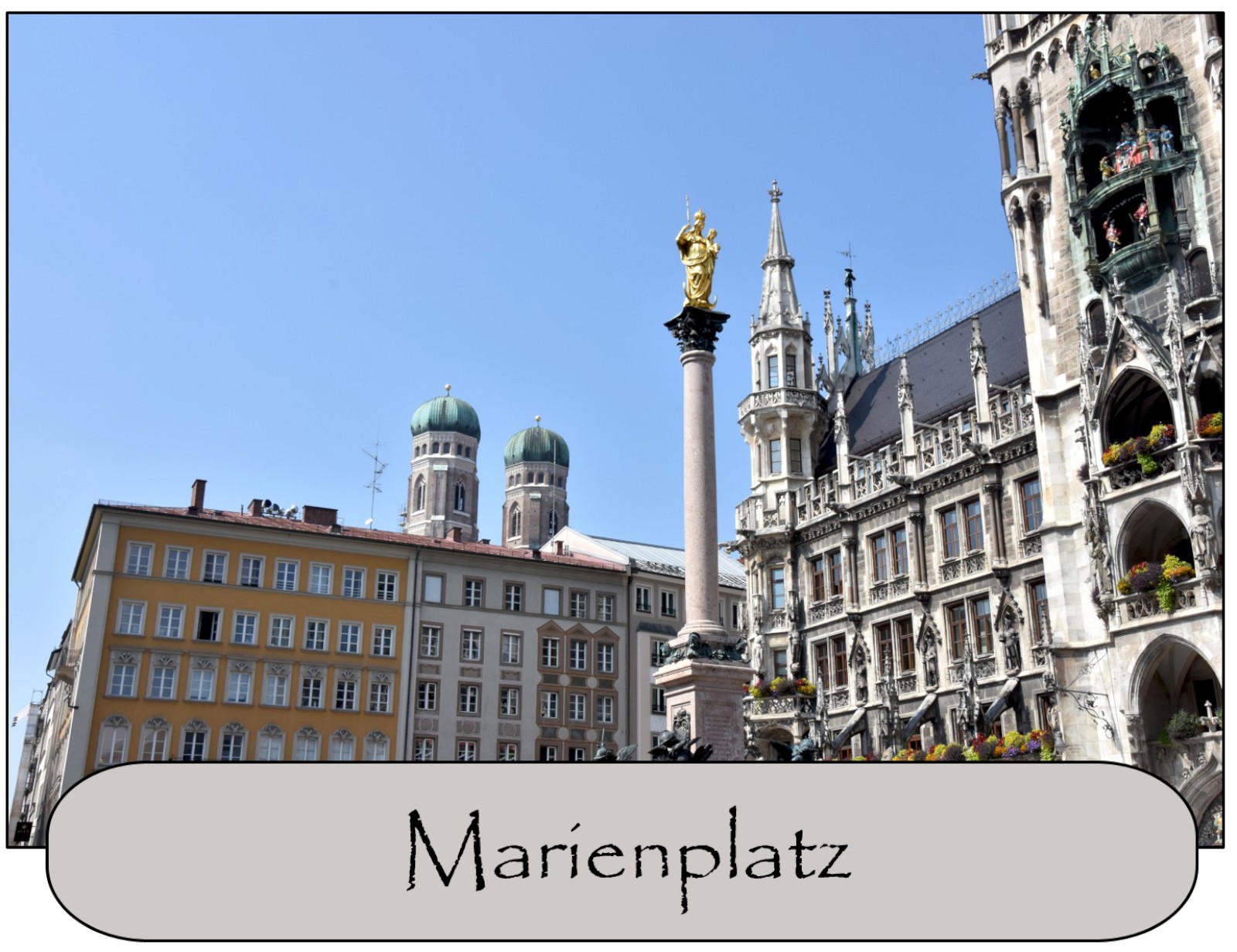Prague’s Astronomical Clock is the world’s oldest working clock of its kind.
Prague’s Astronomical Clock was installed in the Old Town City Hall Tower in 1410. In addition to telling the time in three different numerical systems, it also features an astronomical dial. Above the clock is an hourly show called “The Walk of the Apostles” involving moving sculptures of the twelve apostles and below the clock is a rotating calendar dial that also indicates the current zodiac sign. The clock is in the center of Prague and is one of the city’s most popular attractions. On the top of every hour, crowds gather to watch the movement of the Twelve Apostles sculptures.
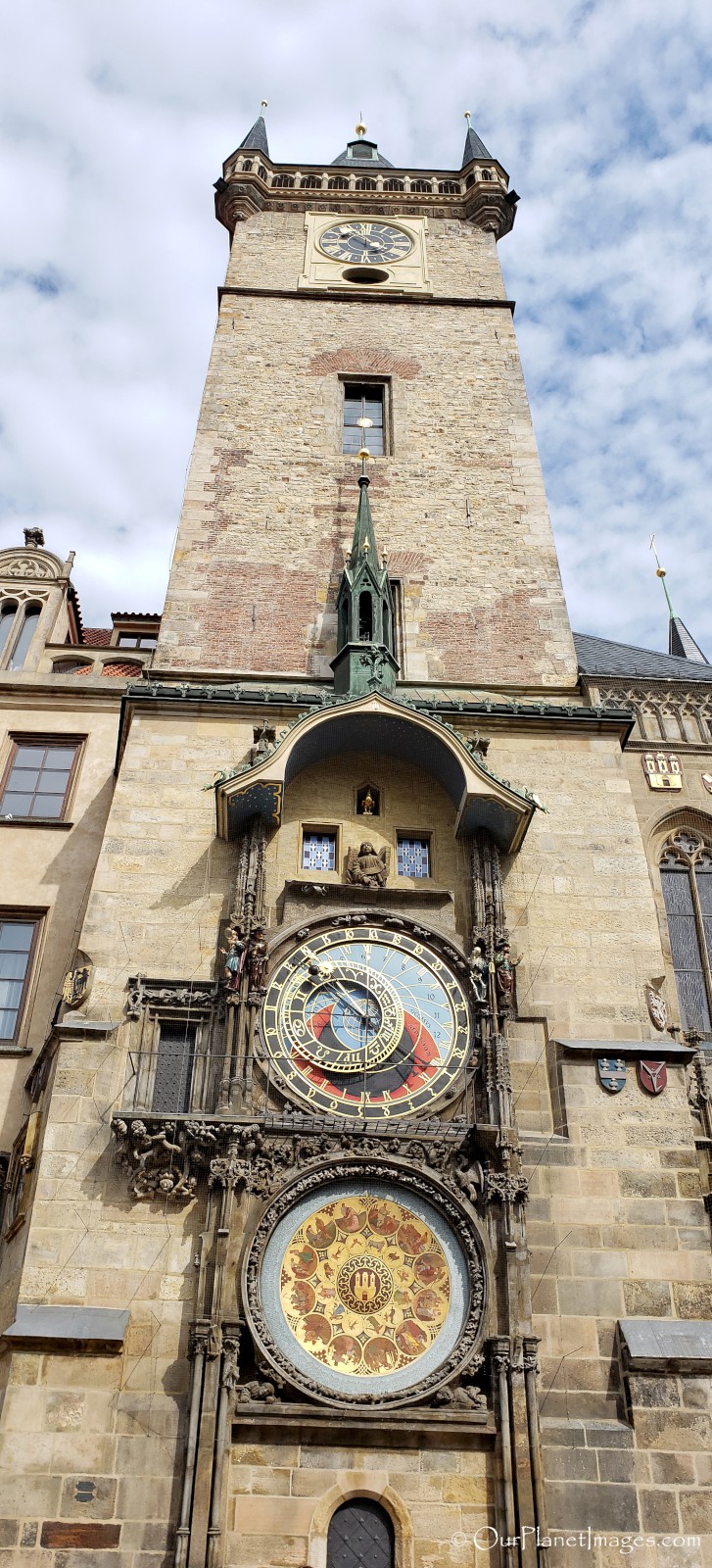
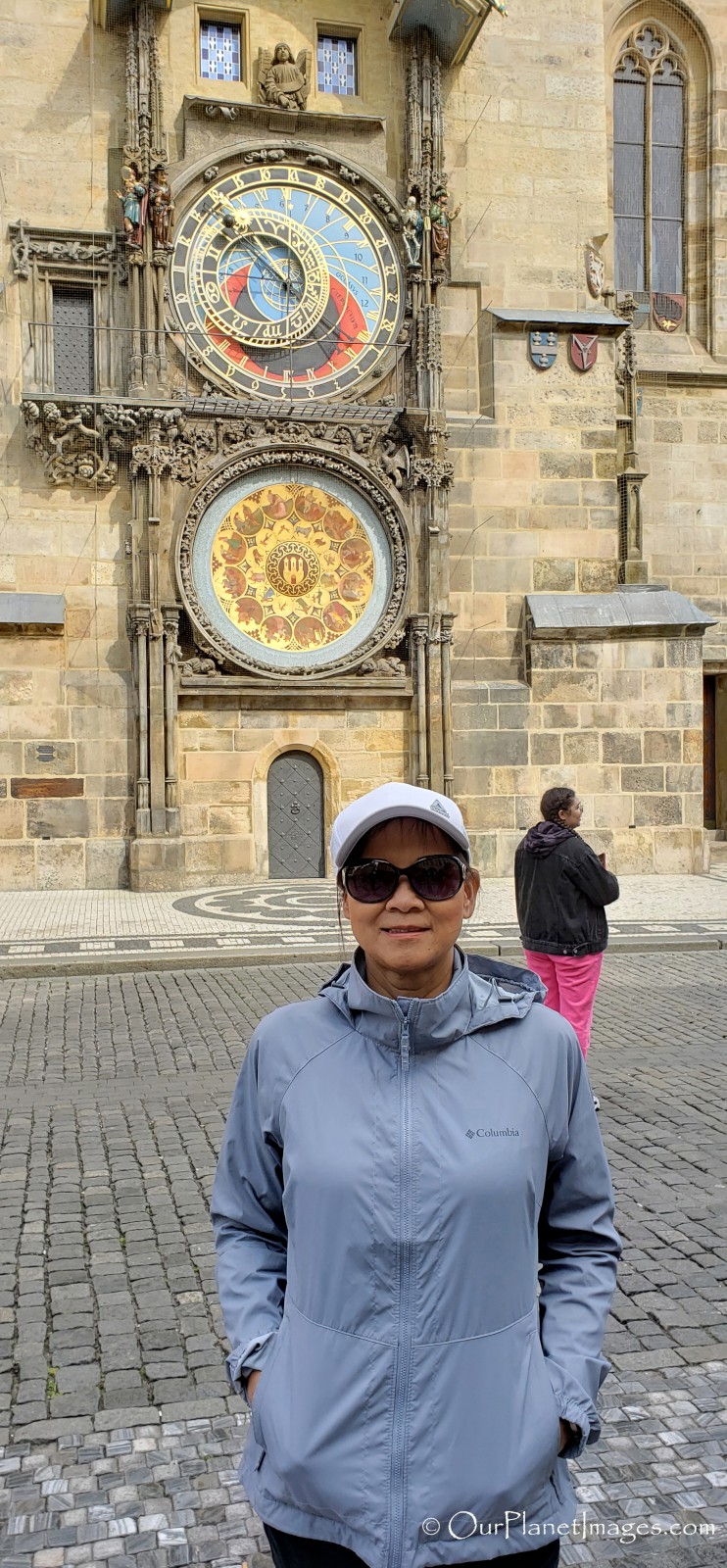
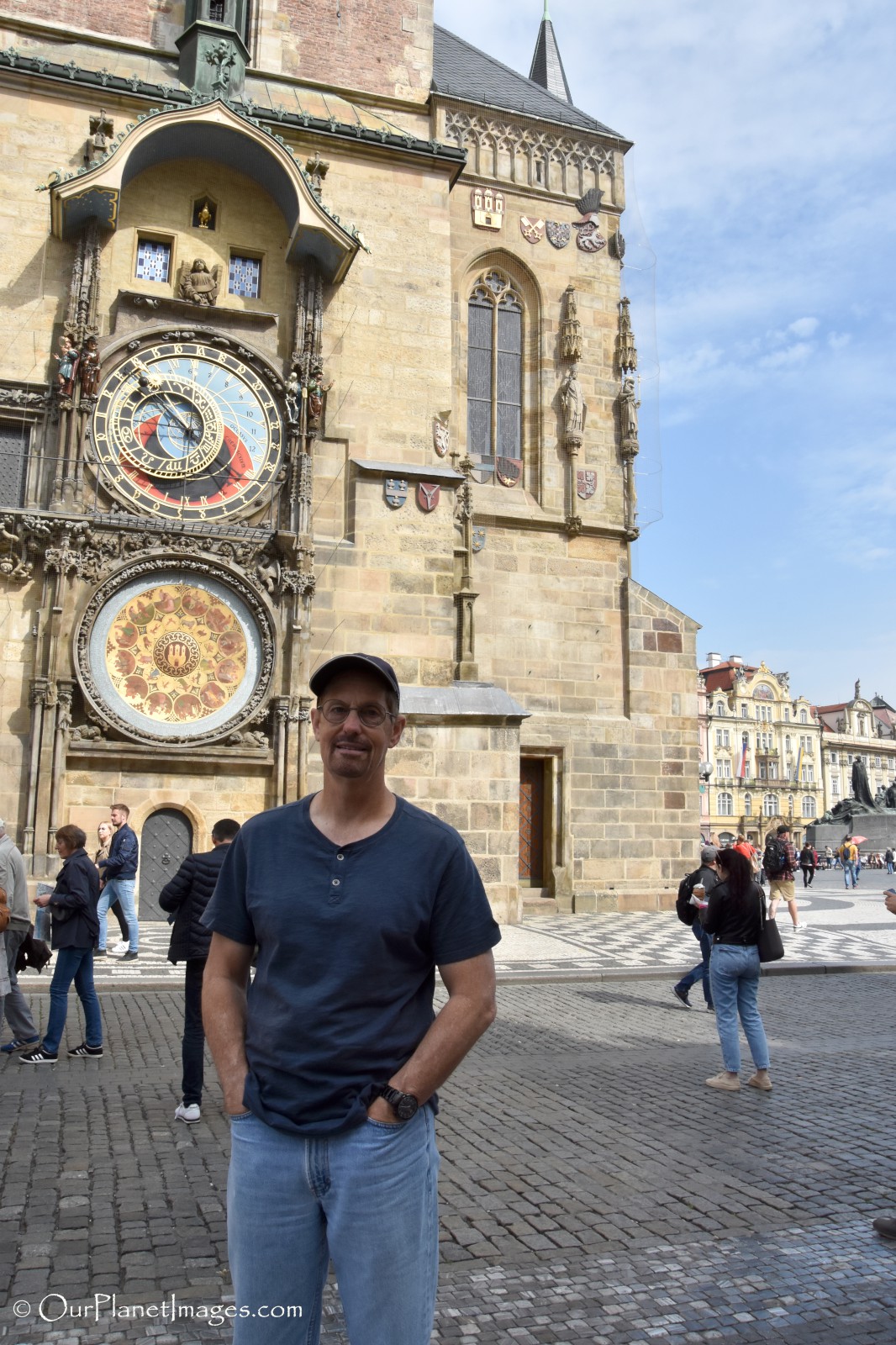
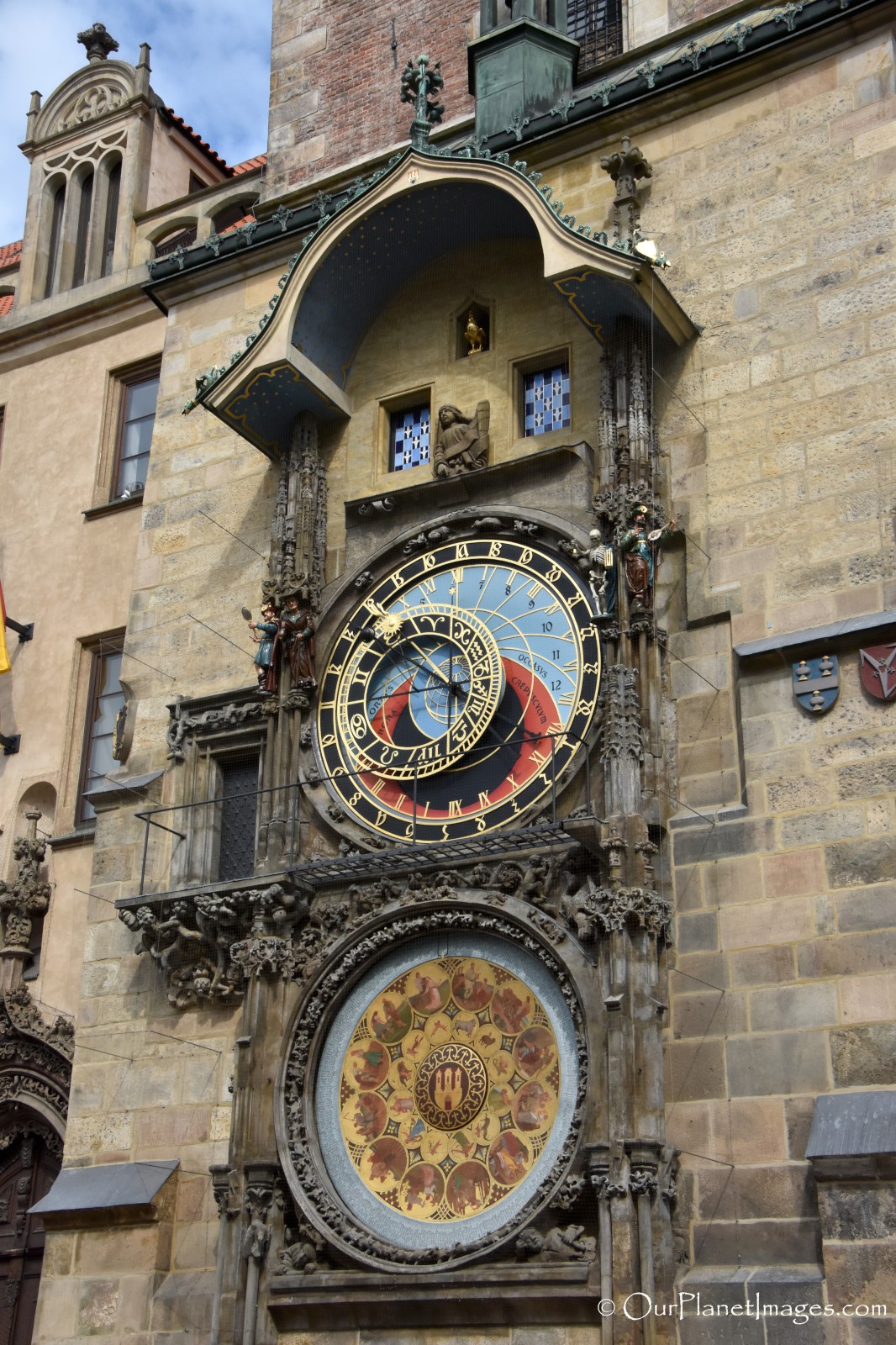
The Astronomical Clock
At first glance, the astronomical clock doesn’t look like any clock that most of us have ever seen. There are three sets of numbers on the dial: Gothic numerals, Roman numerals and Arabic numerals. Each set of numbers indicates a different type of time. The gothic numerals show Old Czech time, golden Roman numerals show the current time we currently use and Arabic numerals show Babylonian time. The time is indicated by the clock pointer with a golden sunburst and a hand on the end.
The astronomical portion of the clock is indicated by three colors. The blue color indicates daylight when the sun is above the horizon, orange represents dawn and dusk when the sun is below the horizon and black is night time. The small black pointer with a golden star on the end point to the astronomical time of day.
The center of the clock, where the hands cross, is the Earth and the position of Prague on the Northern Hemisphere.
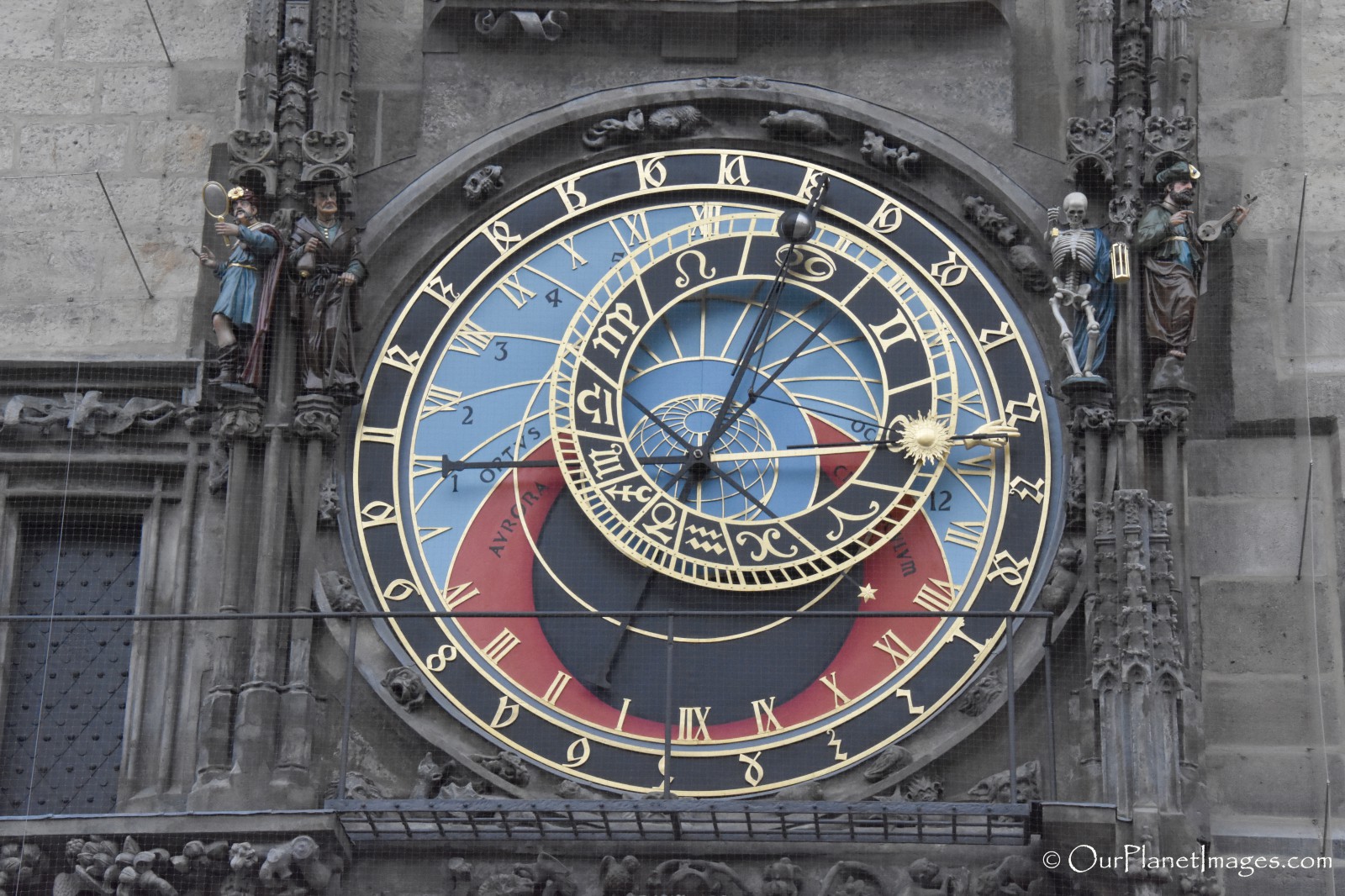
Below the Astronomical Clock is a second dial with larger and smaller circles containing pictures. The larger outer circles represent activities people in the countryside usually did during the specific month of the year. The smaller circles represent the current zodiac sign. In the blue portion of the clock is a list of names that indicate the name given to each of the 365 days of the year. The entire calendar rotates and the golden arrow at the top points to the current day, month and zodiac sign.
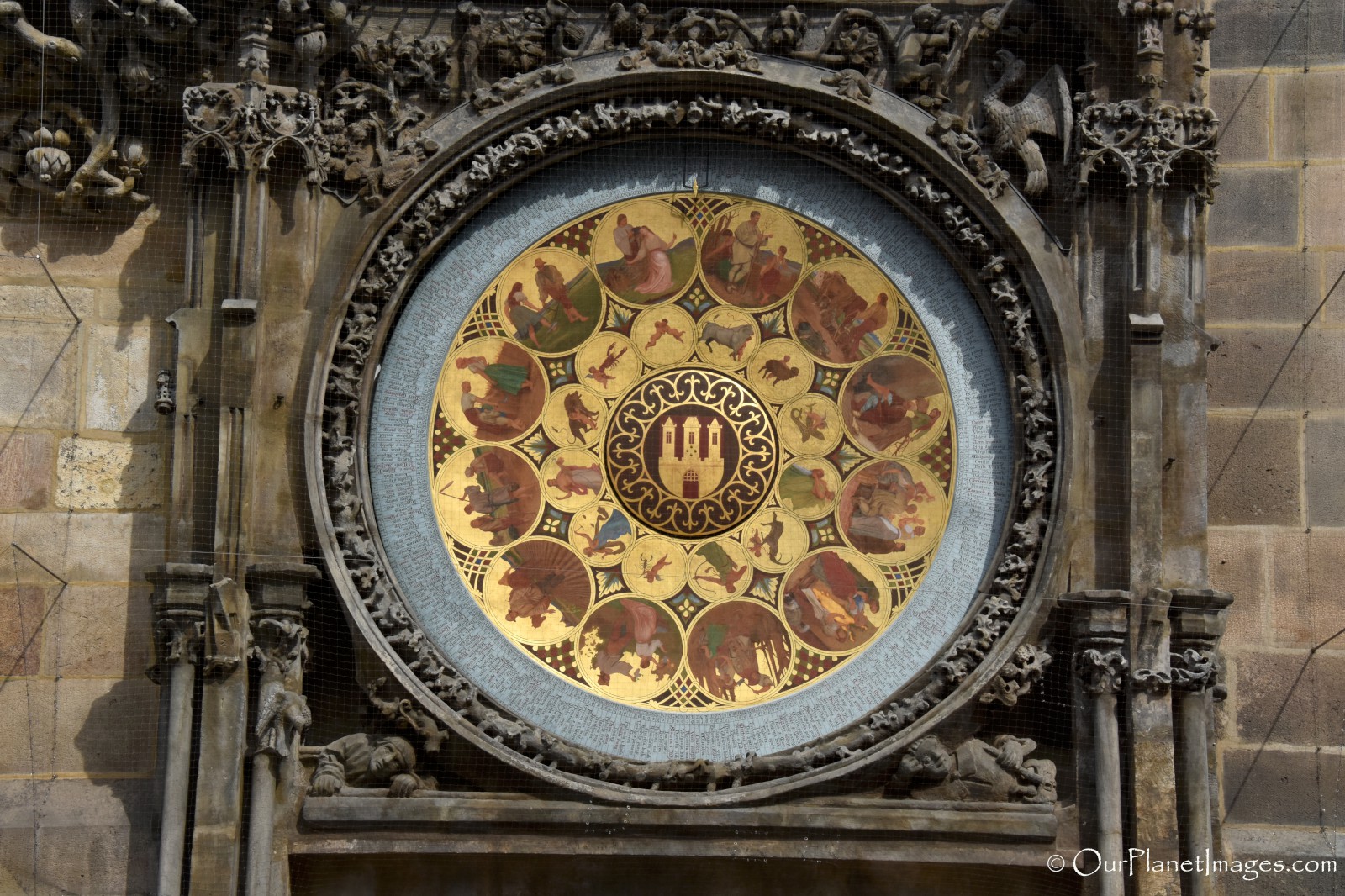
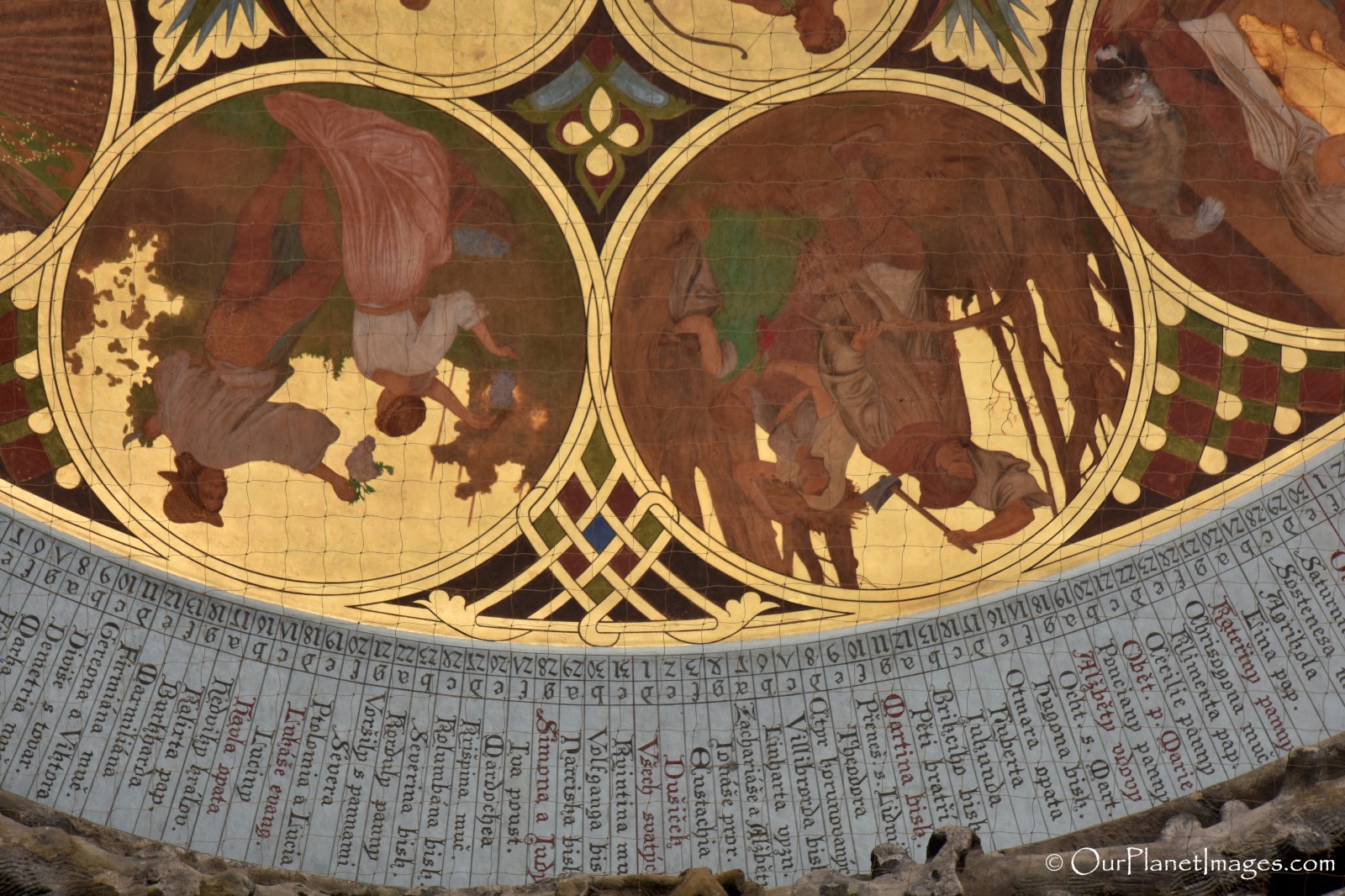
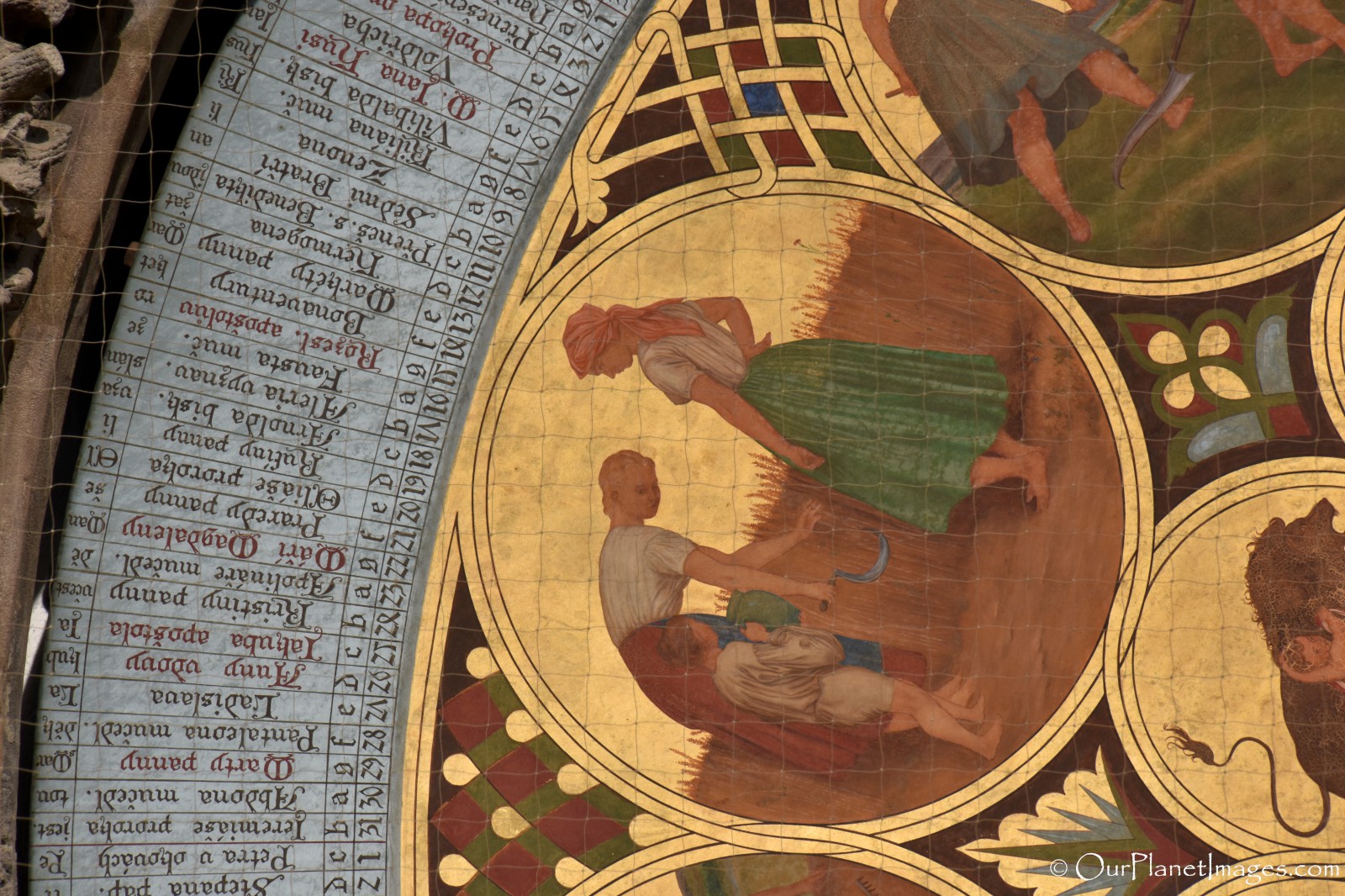
Four figures beside the clock
The four sculptures beside the astronomical clock represents: Vanity (holding a mirror), Greed (holding his money bag), Death (the skeleton) and the Pagan Invasion (represented by a Turk).

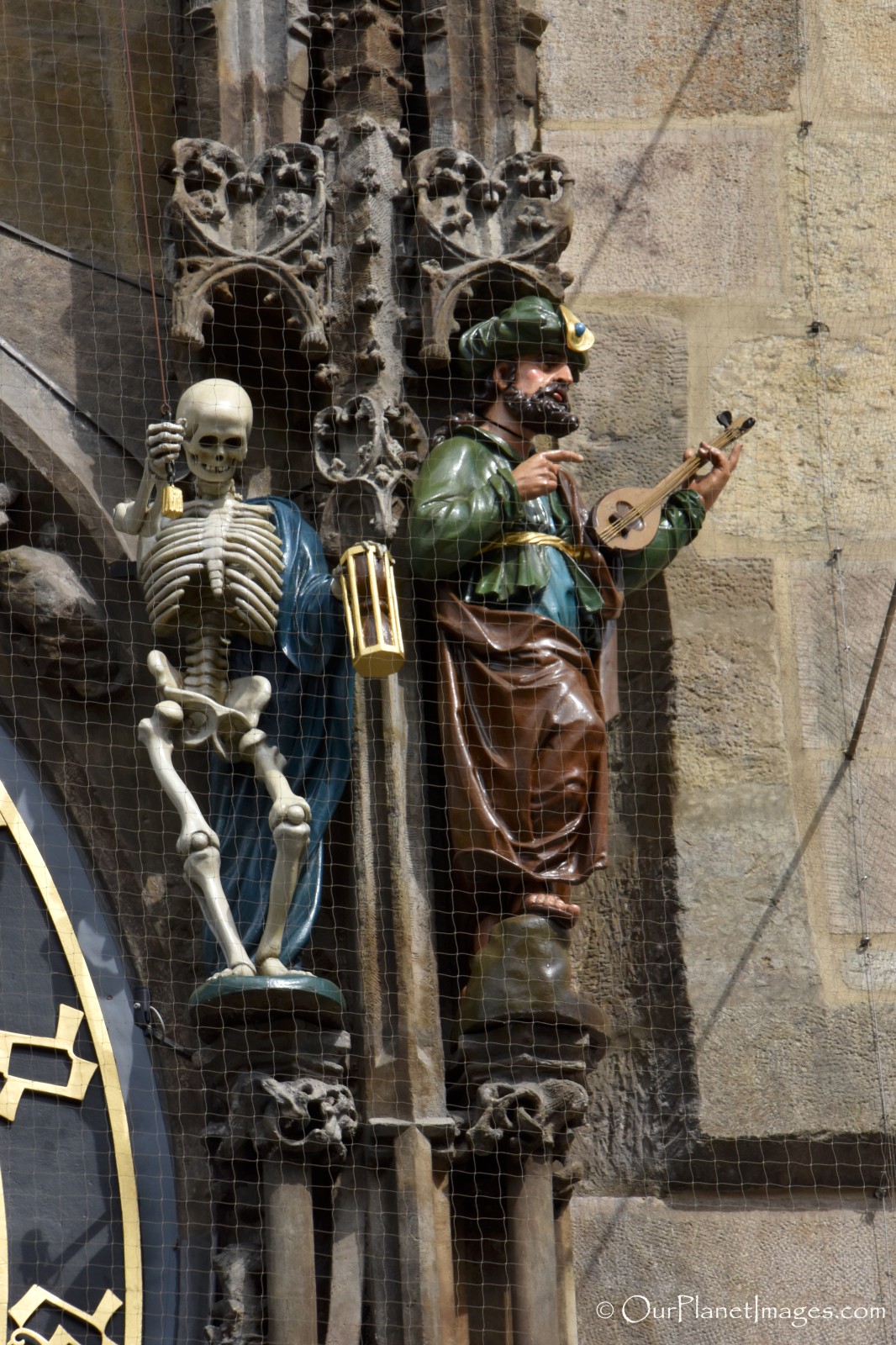
The 12 Apostles
On the hour, Death rings a bell and inverts his hourglass. Two doors on either side of the clock open and the twelve apostles rotate past the windows.
On the left side are Thomas with a lance, James with a staff, Judas Thaddaeus with a club, John with a chalice and a snake, Andrew with an X shaped cross, and James son of Alpheus with a scroll.
On the right side are Paul holding a sword and a book, Peter holding a key, Philip holding a cross, Simon the Zealot with a saw, Matthew holding an axe and Bartholomew with a knife.
At the end of the show, the golden chicken crows and the hour is rung.

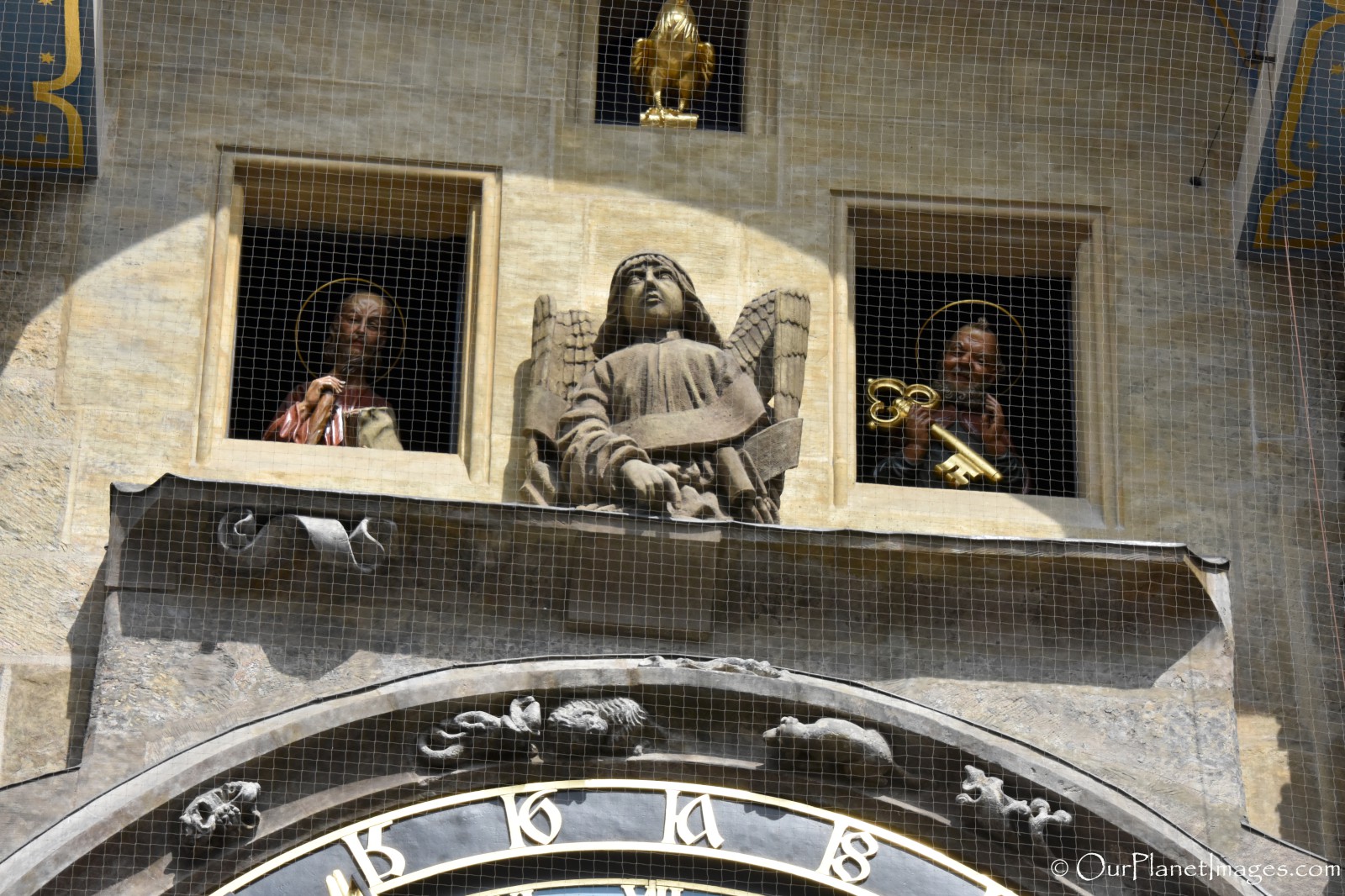
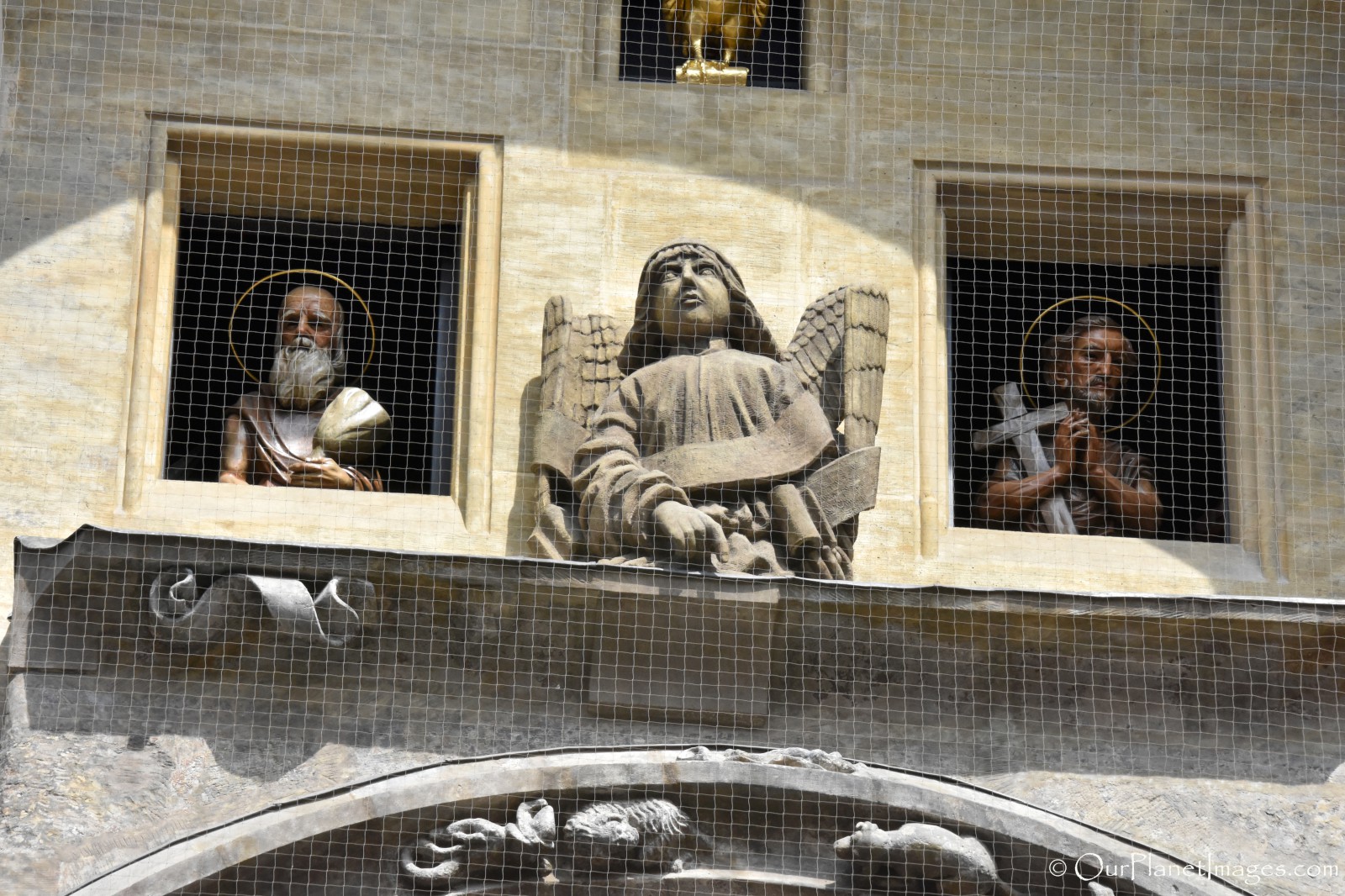

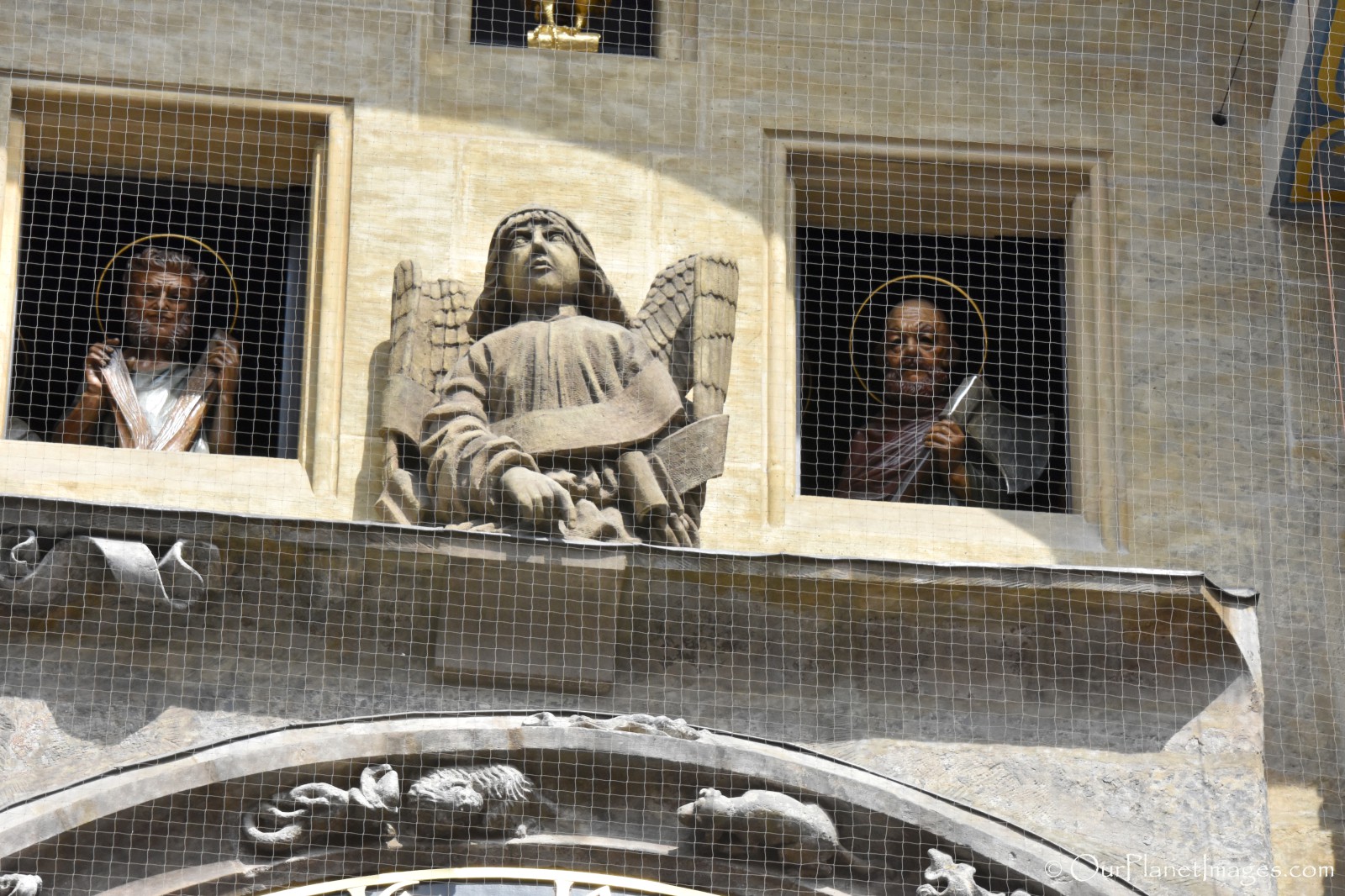
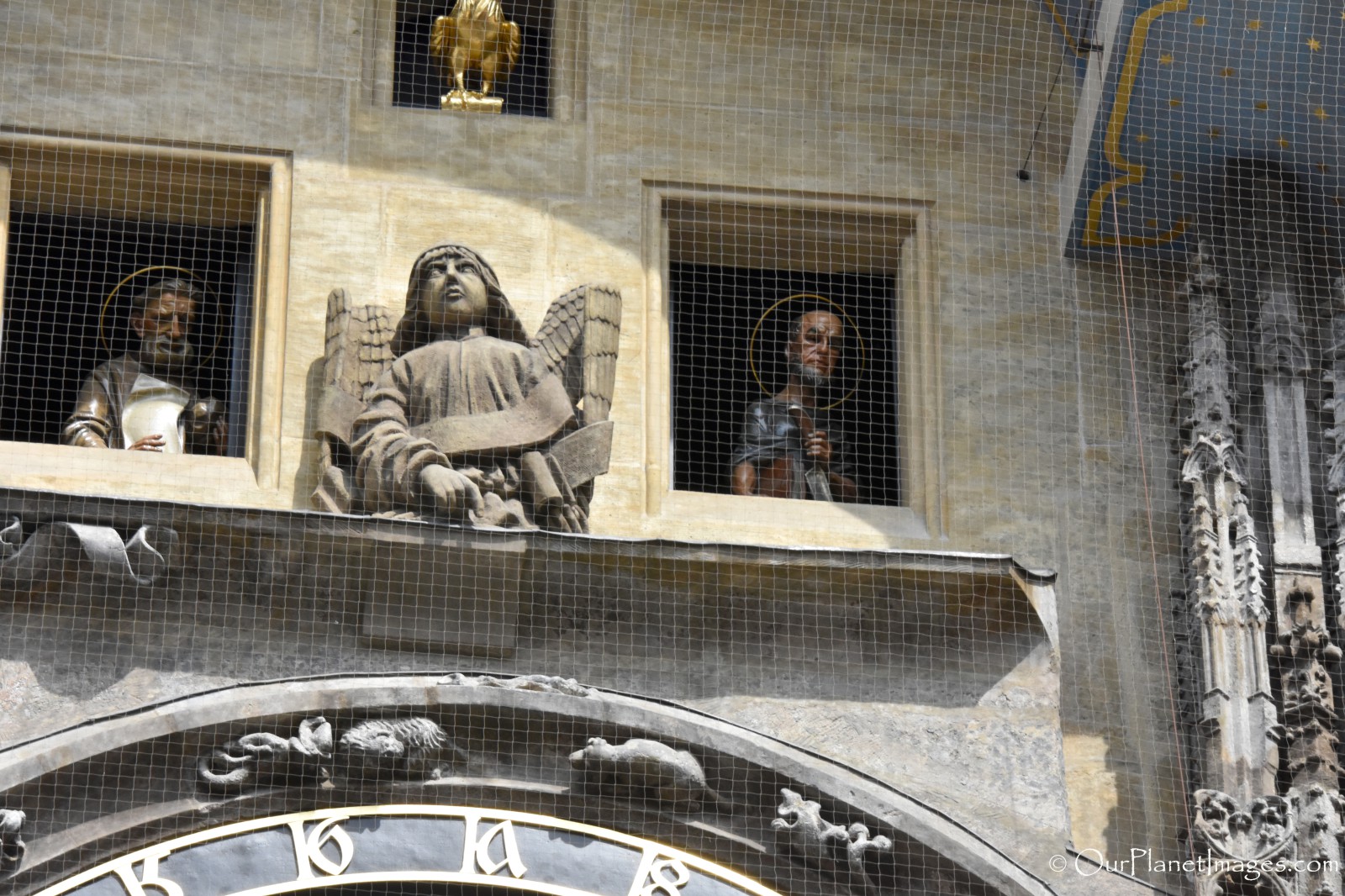
The inside workings
Most people that view Prague’s Astronomical Clock only watch the show from the street but there is an opportunity to see the inside workings of the clock. To see the clock’s intricate construction in motion, take a tour of the Old Town City Hall Tower and get a back stage view of the gears and chains that rotate the apostles during the hourly “Walk of the Apostles” show that starts every hour.

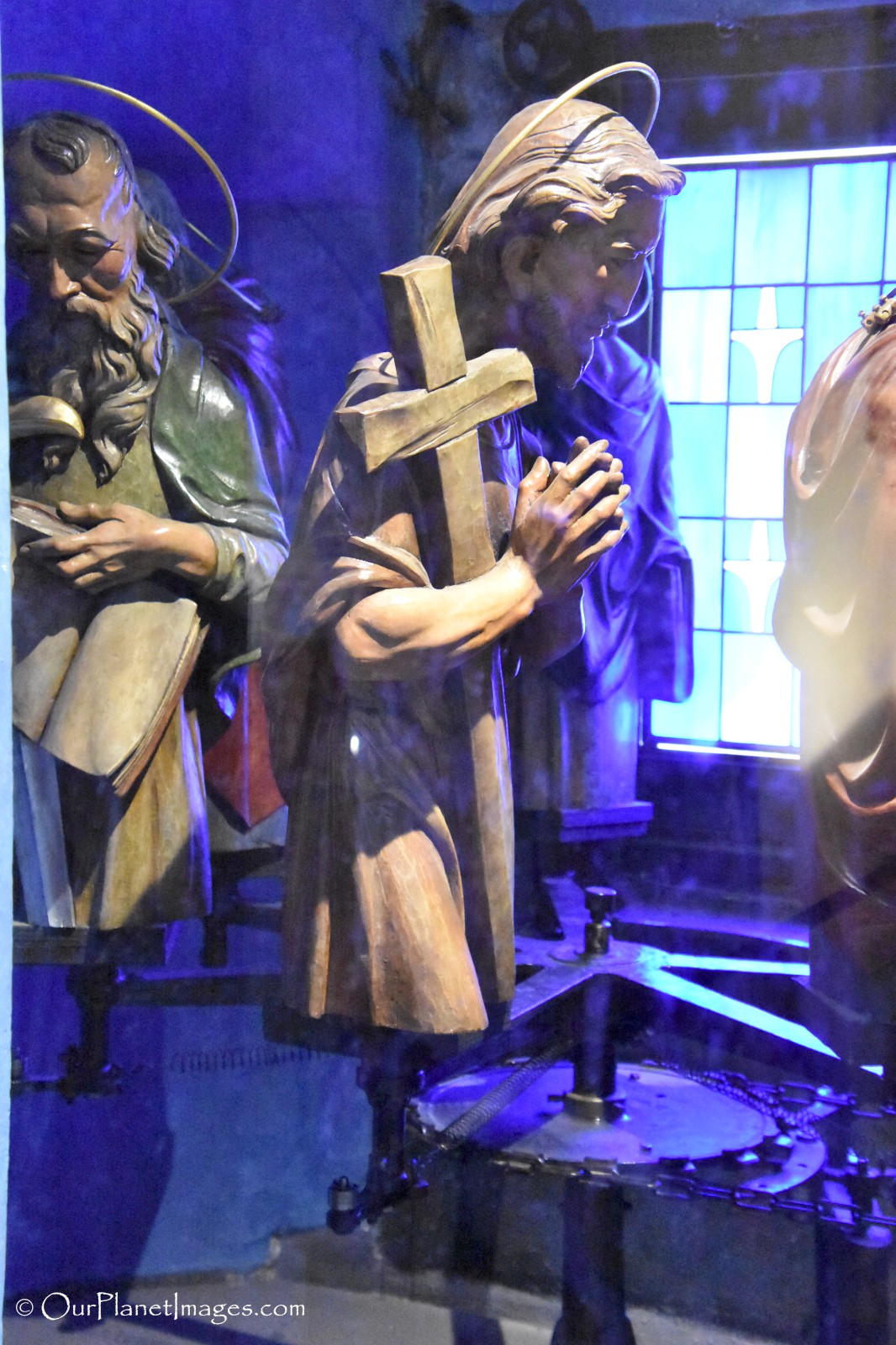

The Dust on My Shoes
The Prague Astronomical Clock is one of Prague’s most popular tourist attractions but most people don’t know how to read it. Most people look at the clock and just see a mix of confusing hands, circles, colors, numerals, zodiac signs and strange sculptures.
Just look at the photos below and see people’s faces. Some people look bored, others confused, a few are taking photos but no one looks like they really know what is going on.

Admittedly, the performance is underwhelming because it only lasts for about 45 seconds but the chiming in of each hour really shouldn’t last for over one minute. The clock itself is the real attraction. How many times do you have the opportunity to see an astronomical clock that has been keeping time for over 600 years?
Going to the Old Town Square is something that every visitor to Prague will undoubtedly do. Seeing the astronomical clock is part of the experience of being in the old town square so I recommend seeing the clock at the top of the hour and watch the show even if you don’t completely understand how to read it, you won’t be the only one. Additionally, tour the old town hall tower to see the inside workings of the clock and the top of the tower has an outstanding view of Prague.
Our culture expects to be wowed by the things that we see but sometimes the impressive part is the accomplishment of the things that aren’t seen.
Try to consider the accomplishment of when something was built with the technology that they had at the time before deciding how impressive the tourist feature might be.

